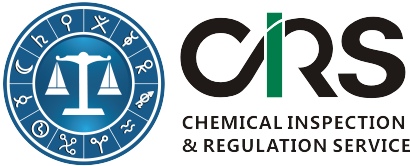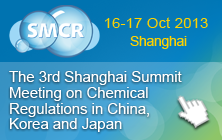EU Prior Informed Consent (PIC) Regulation enters into force.
16 August 2012, The EU Prior Informed Consent (PIC) Regulation enters into force. The regulation implements the Rotterdam Convention at EU level, sets guidelines for the import and export of certain hazardous chemicals and will apply for industry from 1 March 2014 onwards. The European Chemicals Agency will implement the relevant regulatory framework and develop new IT-tools for this.
PIC regulates the import and export of certain hazardous chemicals and requires industry to notify their intention to import or export these chemicals. ECHA's main task will be to transmit the notifications to the importing (non-EU) countries, to manage all related communication and to keep a database of the notifications. Under the current legislation, these tasks are the responsibility of the European Commission's Joint Research Centre (JRC).
The database on the imported and exported hazardous chemicals will be made available on ECHA's website. ECHA will also provide assistance as well as technical and scientific guidance to industry, the designated national authorities both from the EU and from third countries and the Commission.
Impact of PIC Regulations on EU Companies Exporting Toxic Chemicals to non-EU Countries.
Exporters based in an EU Member State have to notify their intentions to export certain chemicals to a non-EU country. This applies to the chemicals listed in Annex I to the PIC Regulation. Exporters have to notify the designated national authority of the country from which the export will originate before the first yearly export takes place, as well as before the first export in each subsequent calendar year.
Each export notification is assigned a unique identifier, called a reference identification number. This is used, for example, to facilitate customs control of the exports of chemicals listed in Annex I.
Content of the notification
The main elements of the data requirements for an export notification include:
- Identity of the substance, mixture or article to be exported. Typically this is the EC number, CAS number and the chemical name as listed in the Regulation).
- Information on the export, such as country of origin, country of destination, expected date of first yearly export, estimated amount to be exported, intended use in the country of destination, name and address of exporter and importer
- Information on precautions to be taken
- Summary of physico-chemical, toxicological and ecotoxicological properties
- The uses of the chemical in the EU
- Summary of regulatory restrictions and reasons for them
The full set of data requirements can be found in Annex II to the PIC Regulation.
The intention to export a chemical listed in Annex I must be notified at the latest according to the following schedule:
- 35 days before the export is due to take place: Exporter must notify the designated national authority of the Member State from which the export will originate.
- 25 days before the export is due to take place: The designated national authority validates the notification and forwards it to ECHA.
- 15 days before the export is due to take place: ECHA sends the notification to the non-EU designated national authority in the importing country.
If a destination country does not respond within 60 days to an EU request for its prior informed consent to such imports (e.g. for industrial use or as an agricultural pesticide), then they may go ahead provided the chemical is "licensed, registered or authorised" in the destination country. If not, then the following three conditions must all be met:
-
there must be official proof that the chemical has been imported to used or used in the destination country in the previous 5 years,
-
there must be no ban or restriction on the chemical in the destination country for its intended use, and
-
the chemical must not be blacklisted under the Rotterdam Convention or an additional EU list for its intended use.
In addition to above three conditions, CMR (carcinogenic, mutagenic or toxic for reproduction) and PBT (persistant, bioaccumulative or toxic) chemicals must not be exported without consent if they are listed in the Rotterdam Convention.
Note: Substances listed in Part 1, 2 and 3 of annex I are regulated differently. In addition to the notification requirement, the export of chemicals included in parts 2 and 3 of Annex I to the PIC Regulation are also subject to the existence of a valid explicit consent given by the designated national authority of the importing country outside the EU. A waiver might be granted only under exceptional circumstances.
For chemicals in part 3 of the Annex, this requirement does not apply when a positive import response is published in the PIC circular of the Rotterdam Convention, and certain criteria are met.
Impact of PIC Regulations on non-EU Companies Exporting Toxic Chemicals to EU Countries.
For companies who wish to export toxic chemicals regulated under the Rotterdam Convention to EU, they not only need to comply with EU REACH & CLP. They also need to comply with local laws that implement the the Rotterdam Convention to EU. For example, in China, the Rotterdam Convention is implemented through Provisions on the First Import of Chemicals and the Import and Export of Toxic Chemicals in 1994, which was amended by the notice of Registration of the Import and Export of Toxic Chemicals in China in 2009 (MEP [2009] 113)
Companies which deal with import and/or export of those toxic chemicals need to register with the Chemical Registration Centre (CRC) of MEP and apply for relevant registration certificates or custom clearance notification.
Reference
http://echa.europa.eu/web/guest/view-article/-/journal_content/7e56e812-fa37-4f78-be0d-07489916ff2b
To follow more events, free regulatory updates and publications from CIRS, please subscribe our monthly newsletter:


